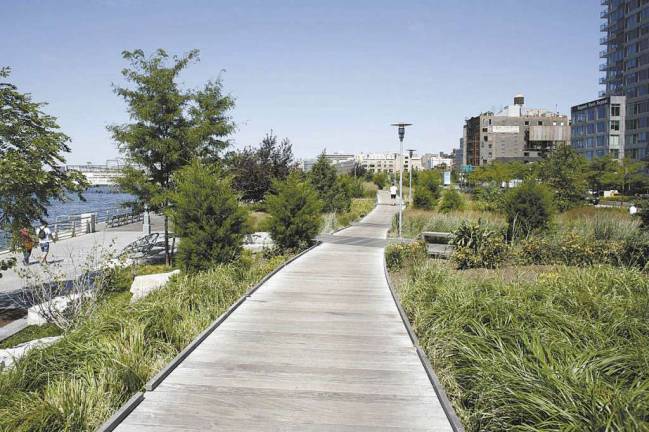Hudson River Park Waterfront Could be Open for Development

Gov. Cuomo signs bill that would allow the park to sell air rights one block inland
Hudson River Park, which extends along the waterfront from 59th Street all the way to Chambers Street, was created in 1998 to be New York City's first self-sustainable park, gaining revenue from its surrounding parklands and developed piers.
But flash forward 15 years, and some of the piers are destitute, and the park is in dire financial straits. Last week, Gov. Andrew Cuomo signed a bill that would, among other things, allow for the transfer of the park's unused air rights one block inland, with the understanding that the revenues will go toward re-building the park's piers and other park improvements.
Cuomo's office did not respond to requests for comment.
With no further information in the bill, community activists from midtown to Chelsea to the Village and the Financial District are afraid that their waterfront will be taken over by huge developments and glass skyscrapers. Activists speculate that there are approximately 1.6 million square feet of unused air rights in the park. And all of that extra development would equate to approximately 2 large Trump towers, according to Andrew Berman, from the Greenwich Village Society for Preservation, who led a community discussion last week on the night the bill was signed.
"I find this a disturbing step in the direction of making public amenities dependent on private development," Berman said to a rousing round of applause at the community meeting. "We are told if you want a public school or park, then you have to sacrifice something."
The St. Genevieve Church basement in Chelsea was filled to the brim with community activists, preservationists from other boroughs and elected officials like city council member-elect Corey Johnson, and Assembly Member Richard Gottfried, who co-sponsored the bill. Their concerns ranged from the loss of the waterfront, to the half-finished state of Pier 40, and to ecological concerns about overbuilding so near the waterfront post-Sandy.
But according to the Hudson River Park Trust, the community is over-reacting. In a recent op-ed in The Villager, Hudson River Park Trust President Madelyn Wils said that before anything could ever be built on the waterfront, a public review process would be required to change the zoning of the waterfront, which could take up to two years. The Hudson River Park Trust refused to answer questions on the topic, and instead referred to the aforementioned op-ed.
"Every advancement at Hudson River Park was born out of a shared process between the community and government," wrote Wils in the op-ed. "Without an extensive and collaborative process, efforts fail. If some development rights can be transferred off the park's designated commercial piers, that will reduce development in the park and may be an elegant solution to helping complete and care for the park."
Local politicians are also confident that the public will have a hand in the review process, and that overdevelopment will not be rampant as many believe it was in the Bloomberg administration.
"With a new mayor and city council and borough president, we have an opportunity to change the way development is done in this city," said Corey Johnson. "If we don't come up with a solution in the next 3-4 years, we won't even have a Pier 40 to talk about."
Many people in the audience during the community meeting last week tried to come up with viable solutions other than development. Marcy Benstock, from the New York City Clean Air Campaign, said that the solution is not in building on the piers because "look what Sandy taught us!" Other activists proposed that one percent of taxpayer dollars go to preserving New York City parks, instead of the actual 0.5 percent that goes to parks and recreation, according to Manhattan Borough President Scott Stringer.
Either way, the community wants to know answers to their questions, like how much money will this development actually make the park? And, what will be built there?
"The local affected community has modest leverage at most over this situation," said Berman. "We're concerned that now two public goods are in direct opposition to one another, it's like we are being asked 'what do you value more, funding for the park or keeping the scale of our neighborhood?'"